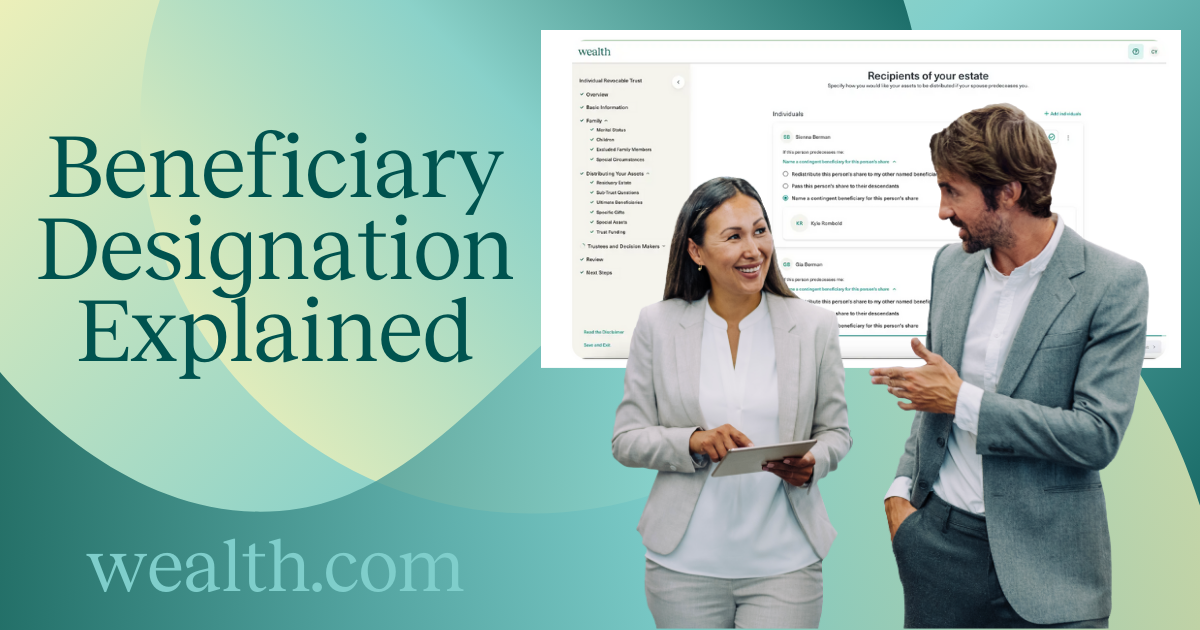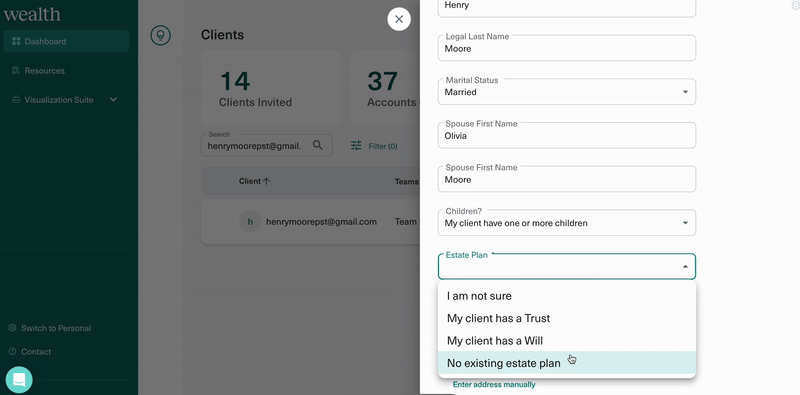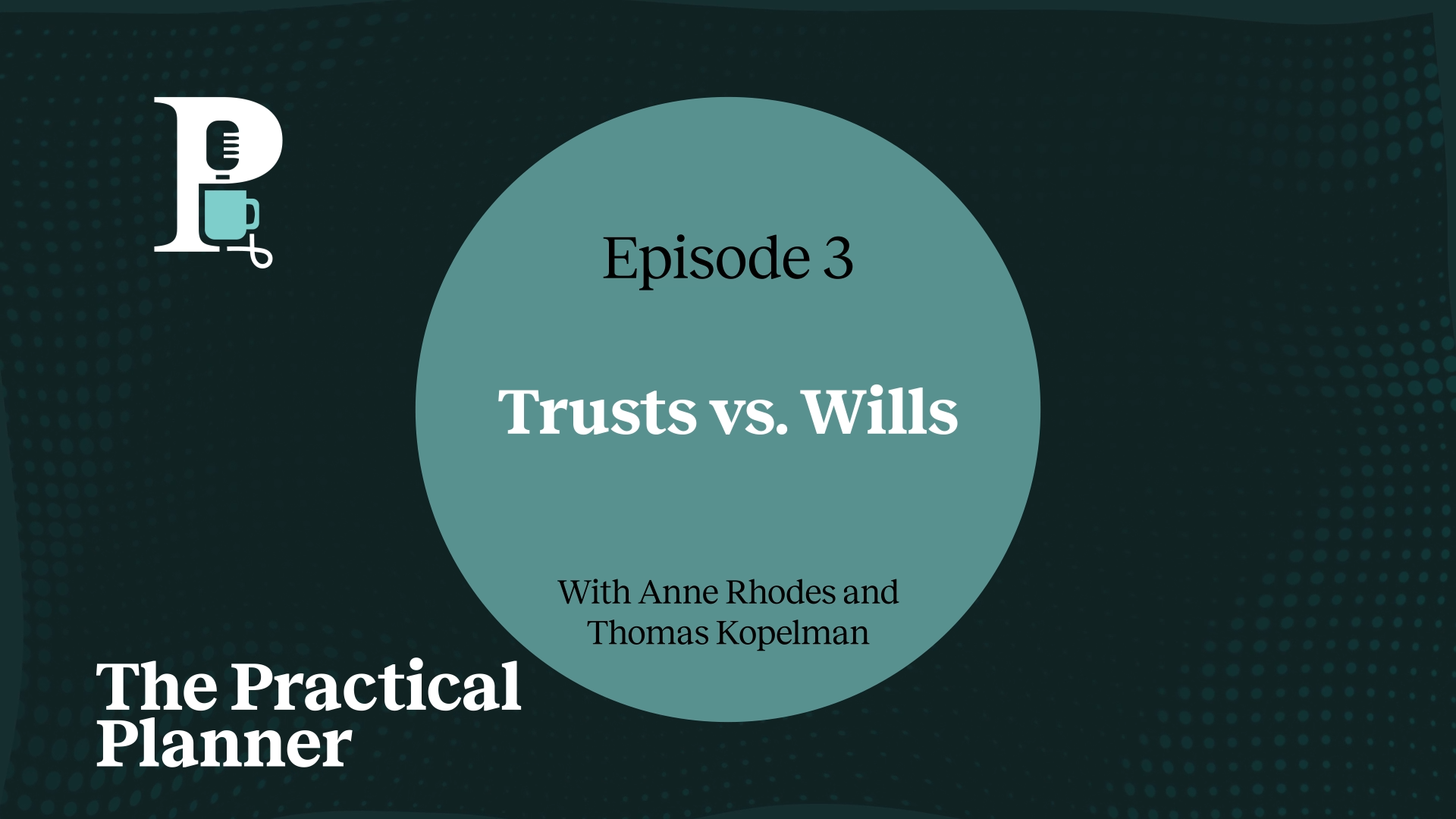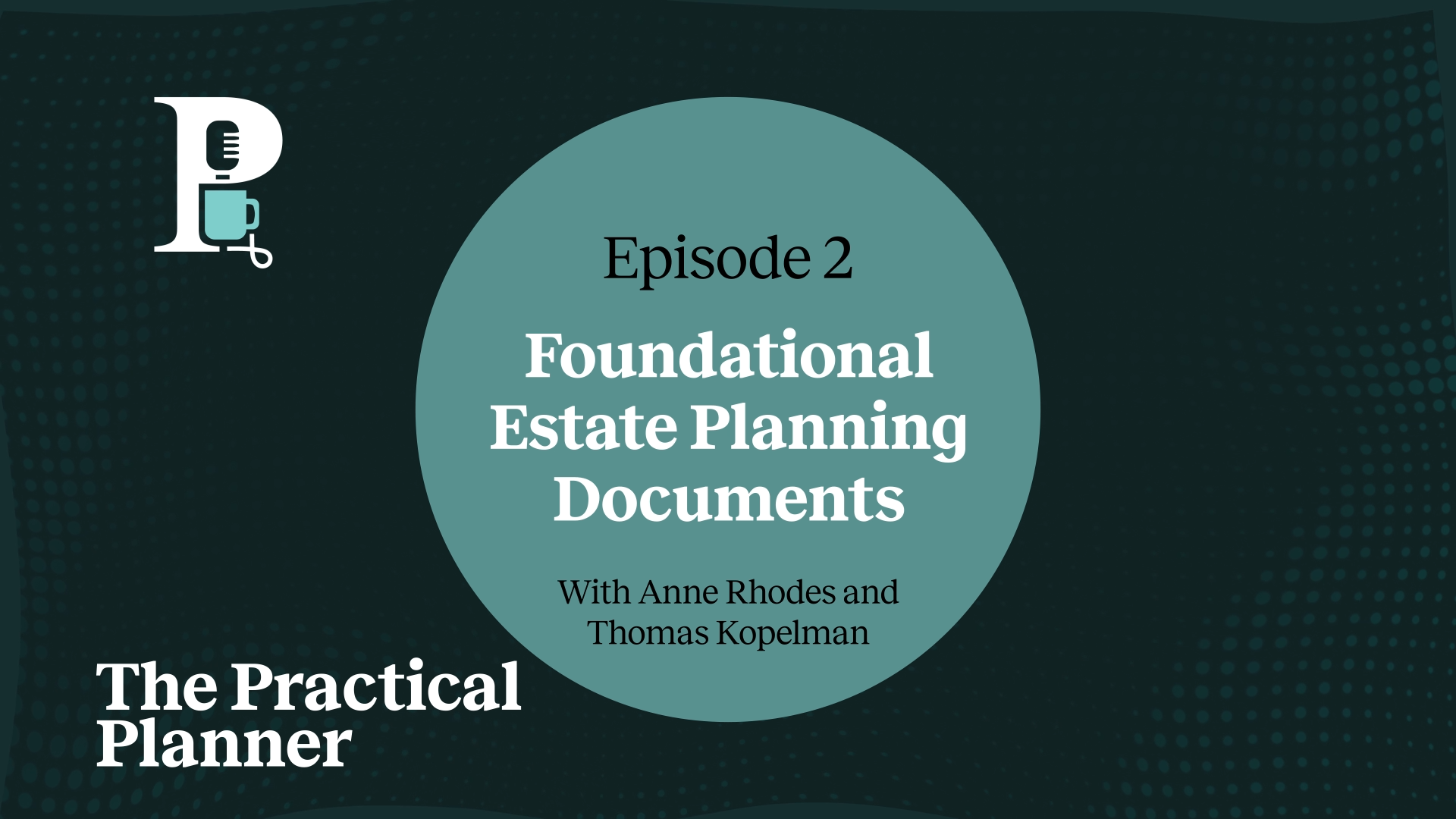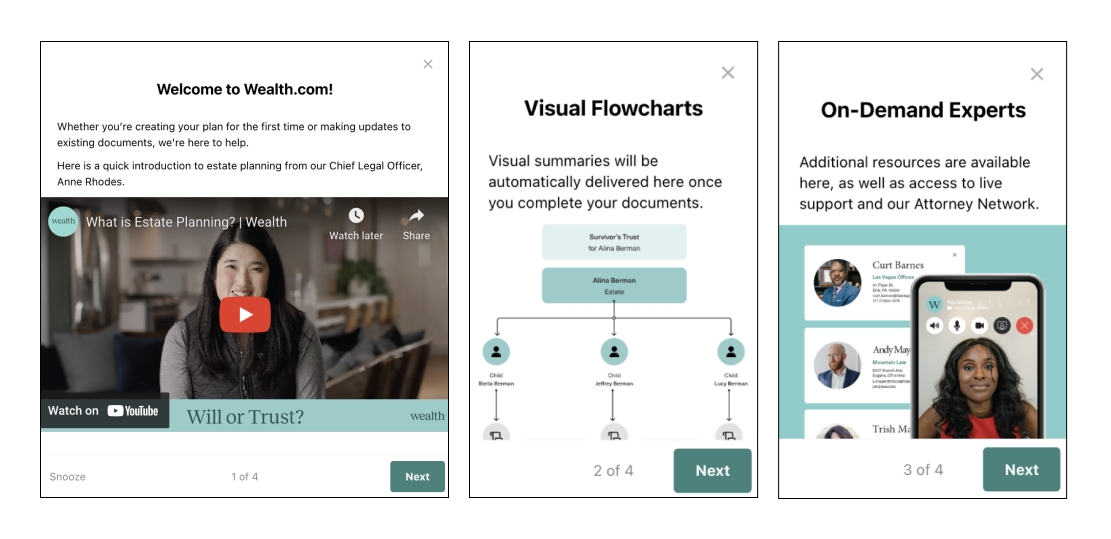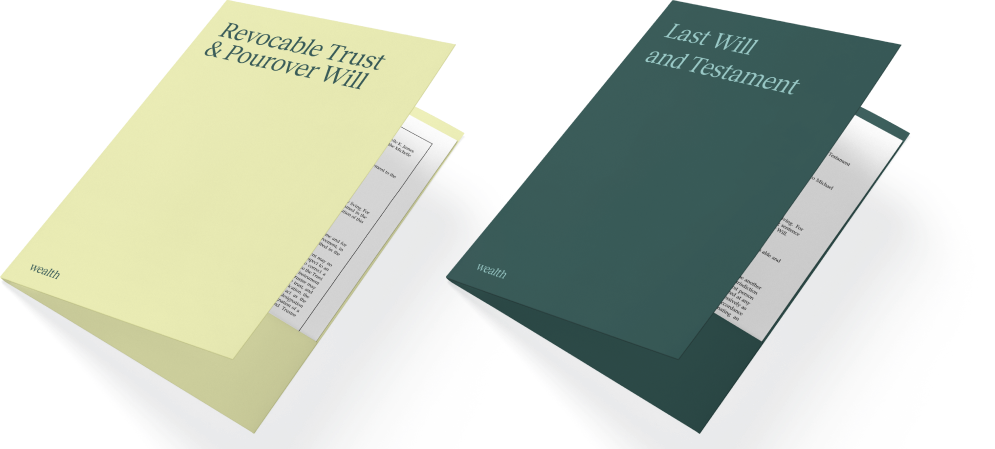How This Crucial Aspect of Estate Planning Works
A good estate plan allows you to understand what happens to your assets when you pass away.
Generally speaking, there are three factors that can impact what happens to your assets at death:
- How your asset is owned.
- Your estate planning documents.
- Whether or not you have designated beneficiaries.
It is not commonly understood that there are certain assets, such as a 401k, with beneficiary distribution rules that can override what is outlined in a Will or Trust.
This means that understanding the totality of various beneficiary designations is crucial to your estate plan functioning as you intend.
If that seems daunting, you’re not wrong. Trying to consolidate and manage everything that requires beneficiary designation manually can be tricky, especially as your life circumstances change over time. Fortunately, the wealth.com platform makes all of this easier to manage.
More on that in a bit — first we further explain how beneficiary designations function within optimized estate planning.
Beneficiary Designations
Many types of assets allow for a formal “beneficiary designation,” which directs where that asset will go upon your death regardless of the terms of a Will or Trust. Common examples of such assets include retirement accounts and life insurance policies. .
A closely related cousin of the beneficiary designation is a “pay on death” (POD) or “transfer on death” (TOD) designation. The same idea applies: if you pass away, your designation will bypass your Will or your Trust. Some states allow vehicles, personal objects, and real estate to pass through TOD, but the documentation must be carefully prepared to meet the legal requirements. Bank and brokerage accounts, closely-held stock and other securities may also pass by POD or TOD depending on the bank or custodian that maintains the account for you.
Typically, beneficiary designations are made through the institution where the asset is held (a custodian or administrator). Once a beneficiary designation has been made through the institution, it is important to keep track of who you designated as beneficiary for each asset so it aligns with and does not contradict how you want asset distribution to go in your estate planning documents.
Not all assets are eligible to have a designated, POD or TOD beneficiary. For example, there is currently no cryptocurrency exchange or investment platform that will allow you to designate a beneficiary for your crypto assets. It turns out a Will or Trust is one of the best ways to make sure your crypto will go where you want them to at your death.
Type of Ownership
Your assets can be owned in different ways. You can own them jointly with others and the titling carries implications for the designation upon death, or through an entity like a trust or corporation.
Certain ownership types, like “With Right of Survivorship,” “Joint Tenancy” or “Tenancy by the Entirety,” legally indicate that at one of the joint owner’s death, the other surviving joint owner(s) will automatically inherit the asset. In that case, the last survivor takes the entire asset and will be able to pass the asset to their beneficiaries through their Will or Trust. These forms of titling are especially common when you purchase real property with someone else.
The automatic transfer on death processes supersede any beneficiary designation or terms in your Will or Trust.
If you own an asset through an entity or arrangement governed by an agreement, the agreement may specify what your rights and restrictions are upon death. For example, you may own real property through an LLC.
The operating agreement for the LLC may contain provisions restricting your ability to transfer your LLC interests to your own beneficiaries upon your death, or give a right of first refusal to the other LLC members to purchase your interests.
If post-death rights are not spelled out, those LLC interests would likely default into your estate and pass to your beneficiaries through your Will or Trust.
Estate Plan Documents
Finally, many assets do not transfer to someone else automatically upon your death, as outlined in the two categories above.
These assets typically pass pursuant to your Will or Trust.
Conclusion
These three methods of asset distribution can work together as part of your overall estate plan to dictate where your assets will go upon your death.
However, understanding which assets have beneficiary designations and whether how you have titled the asset affects the default rights upon your death can be difficult because they are often disaggregated.
This is where the wealth.com platform comes in: our Asset Aggregation and Ownership Balance Sheet tools help record how you own your assets and what their various beneficiary designations are all in one place.
This information at the asset by asset level can be seamlessly paired with your estate planning documents to give you an understanding of how your assets will be distributed and with whom they will end up after your death.
Wealth.com helps you create and maintain a cohesive estate plan — providing the peace of mind that comes from knowing the friction your heirs will experience is minimized and your estate will be administered correctly when the time comes.
Note: Recording or updating beneficiary designations in the wealth.com platform does not alter your beneficiary designations; instead, we make recording all of your externally designated beneficiaries simple which helps maintain updated records and aids in the estate administration process.
